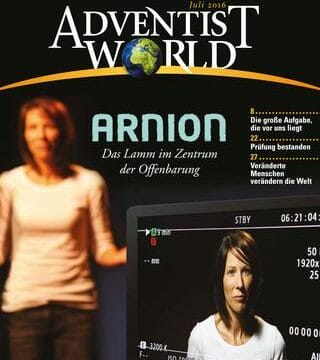Do they usually indicate Parkinson’s disease?

My mother is 60 years of age and enjoys good health. She has developed shaking of the hands, which gets worse in stressful situations. Her voice has also changed, and it’s difficult for her to sing. She has been told that this is “essential tremor.” Is this the same as Parkinson’s disease? Why is it essential?
We are fearfully and wonderfully made, and part of the wonder of creation is coordinated movement. We may take this for granted until something goes wrong. Every movement and action is coordinated by the nervous and muscle systems of the body. Complex mechanisms are in place to ensure that every planned—even every reflex—action is well executed or performed. Changes in normal functions of our movement, including shakiness or tremor, are broadly termed movement disorders.
The word “essential” when applied to the condition “essential familial tremor” indicates, in medical language, that the exact cause of the problem is unknown. This terminology is used also to describe more than 90 percent of cases of high blood pressure, or hypertension, which is labeled “essential hypertension” if no specific causes are found. The word “familial” indicates a genetic component, often a family history of the condition. It does not affect longevity (life expectancy) and is not the same as Parkinson’s disease.
Essential tremor is one of the most common movement disorders. Approximately 1 percent of the global population (one person in every 100) is affected. It affects men and women equally and becomes more frequent as people grow older. It may appear in childhood, but it is seen most commonly in the second decade of life and after the age of 60. The tremor typically increases slowly over time as individuals age. Some individuals have only shaking of the hands/arms; others may have a shaking (bobbing) of the head, and also a voice tremor or changes in speech. This could account for difficulty in singing.
In essential tremors it appears that the major problem lies in the cerebellum, a part of the brain that is key in the control of smooth and accurate movement, posture, and balance. This is done through the coordination and regulation of muscle activity. There is a complex anatomical and chemical loop regulating movement, and pathological changes in part or parts of this mechanism are thought to be responsible for essential tremor.
The diagnosis is made on the basis of a comprehensive medical history and clinical examination. Family history can be helpful. It is important to enquire about specific medications that may cause or aggravate a tremor (some antiepilepsy agents, certain antidepressants, and lithium). Exposure to toxins such as lead, mercury, or manganese may also cause tremors. Careful history and examination can readily distinguish essential tremor from Parkinson’s disease.
Treatment is essentially cared for with medication, although surgery and a technique known as deep-brain stimulation may be needed in cases in which the tremor is disabling.
Peter N. Landless, a board-certified nuclear cardiologist, is director of Adventist Health Ministries at the General Conference.
Zeno L. Charles-Marcel, a board-certified internist, is an associate director of Adventist Health Ministries at the General Conference.








